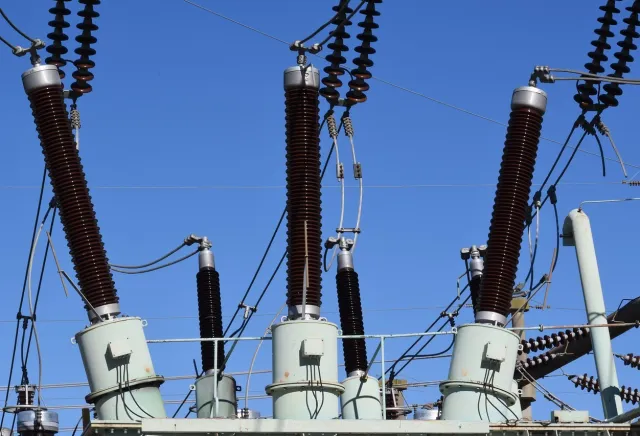High Voltage Circuit Breaker Interrupting Rating
The interrupting ratings of a high-voltage circuit breaker are primarily defined by two parameters: the rated short-circuit current, I, and the rated maximum voltage, V, at which the breaker must interrupt I. These concepts are straight forward and widely understood. However, high-voltage circuit breakers also feature a lesser-known parameter called the voltage range factor, K.
Note: This factor is unrelated to the K-factor used for assessing a transformer's suitability in circuits with high harmonic levels.

ANSI Standards
In many circuit breaker designs, the physics of arc interruption enable a breaker to interrupt higher currents at lower voltages. To account for this characteristic in circuit breaker applications, the K factor was introduced in ANSI standards. The K factor is a dimensionless value that defines the range of voltages over which the interrupting current increases. The ratio of the rated maximum voltage to K, or V/K, identifies the voltage below which no increase in interrupting current is required.
The K factor also determines the extent of the required increase in interrupting capacity. At V/K, the interrupting current must equal KI. Between V and V/K, the increase in current is proportional to the decrease in voltage, and it can be calculated using the formula:

This formula ensures a constant MVA interrupting rating (calculated as  ) between V and V/K, and a constant current interrupting rating (KI) at voltages below V/K.
) between V and V/K, and a constant current interrupting rating (KI) at voltages below V/K.
Important Notes About the K Factor
- 1. Alignment with Circuit Breaker Technology
- The concept of the K factor aligns with the physical characteristics of oil-blast and air-magnetic circuit breakers. These technologies inherently have higher interrupting capacities at lower voltages, and using a K factor other than 1 allows for broader application of a single breaker. However, circuit breakers utilizing vacuum or SF6 puffer interrupters exhibit nearly constant current interrupting capabilities up to their maximum voltage limits. For these technologies, assigning a K factor other than 1 does not reflect their physical attributes. Consequently, in the 1987 edition of ANSI C37.06, K is set to 1.0 for all breakers except indoor oilless types used in metal-clad switchgear.
- 2. Relevance in System Applications
- For a system with a known voltage, the K factor is less critical. In practice, if system voltage decreases, the available short-circuit current also decreases rather than increases. If a circuit breaker is correctly rated for the maximum system voltage, it will have sufficient interrupting capacity for any lower voltage within the same system.
